The Roadster – a development history
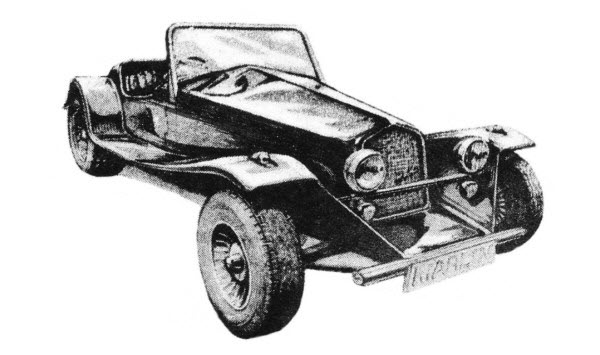
I have only been involved with Marlins for the last ten years, since I bought my first Roadster in June 2009, and the development of the type has fascinated me. This document is an attempt to identify the various changes and improvements made over time to the Roadster.
I owe many thanks to Ben Caswell for his patience (with me) and his knowledge (of the cars) as we have worked together to improve the MOC Archive and also to produce this document.
The information that follows is correct to the best of my (our) knowledge, however should you know better than me (us) on any particular point, please get in touch and I’ll correct it.
DC (& Ben) December 2019
The Origin of the Marlin Kit Car
These initial biographical notes are gleaned from an article which Doug & Liz Billings wrote for the Marlin Owners Club magazine “Pitstop”
Paul Moorhouse was an apprentice engineer at Rolls Royce in 1969, studying HND engineering at Derby College, when Doug Billings and Derek Jones first met him
He had an old Morris 8 Tourer (without a hood – who needed one !) and then a Jaguar 2.4, which was soon modified by the removal of the roof, and an 18 inch shortening of it’s body which was strengthened with internal tubing.
His next project was a 3.4 Jaguar with a space framed body panelled with plywood, and this was followed by another Jaguar, this time vintage styled and with an aluminium body.
Paul then turned to Triumph as a basis for his next car and built 536 URR, which although very different from production Marlin Roadsters, is easily recognisable.
JRR 929D followed on, again a recognisable shape but very different underneath from what was to become the production standard
Soon after completing JRR, Paul left Rolls Royce and went back to college to learn to teach technology. Whilst there he designed and built yet another car, this time a Triumph based single seater. Known as The Bomb, this car still exists.

He had moved to Plymouth before he first went public with the Marlin in 1979, and both “prototypes” had moved on, 536 having already served 5 years as Paul’s every day regular transport. This photo of the two cars together was supplied by Liz & Doug Billings.

Unfortunately 536 seems to have disappeared in the mists of time, but JRR is alive and well.
The first production Marlin Roadster chassis was was laid down on 1st July 1979 and sold to a Simon Lister for the price of £655 (inc VAT).
The chassis was designed to maximise the use of Triumph running gear from any Herald, Vitesse, Spitfire, GT6 or Bond Equipe.
These early Roadsters are generically known as Mark 1’s. The all Triumph based cars had subtle changes in body and chassis design from the prototype – see photos of 536 & JRR
Due to a constant process of improvements, in Paul’s workbook listing from the start of production, the generic Mark 1 all Triumph kit was divided somewhat confusingly, (and we’re not sure exactly why) into three types listed as:
- MK 1’s – Chassis numbers 1001 to 1033
- Mk 2’s – Chassis numbers 1034 to 1057
- MK 3’s – Chassis numbers 1058 to 1285
Note that doors were an option on all cars from quite early on and they don’t give an indication of age, as some later cars had none. The last Triumph based car (chassis 1285) was produced in June 1983
Of the 236 all Triumph kits produced approximately 160 are known to have been put on the road.
This document is an attempt to trace the production changes as the cars developed, and are in approximate date order, however the factory sometimes used new (improved) parts before their stock of earlier ones were used up, so this list is in no way definitive.
Remember too that all cars are unique to their builders, and may well have evolved from owner to owner over time, something which often makes recognition of a particular car very difficult
Pre-Roadster Prototype 1 536 URR






Note the front wing design of 536, noticeably different from JRR and production cars. This car is believed to have been rebuilt, reregistered as Q494 HEX, and apparently was sold to Europe…but by Dec 2019 all efforts to trace it have failed
Pre-Roadster Prototype 2 JRR 929D 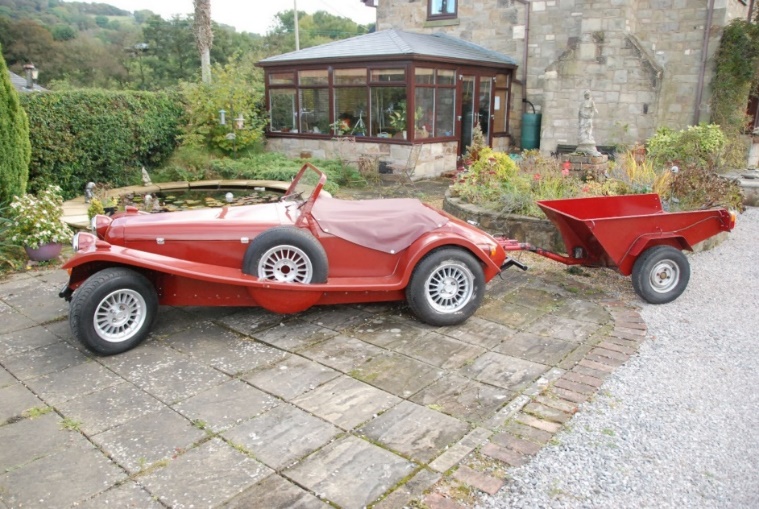


JRR is alive and well and well known, having been owned by club members for many years. The car was rebuilt by the then Chairman 2013 – 2015. The trailer in these pictures was built by Paul Moorhouse, in the archive we have a picture of him towing it with 536
Mk 1 all Triumph kits

These pictures were taken by “Jongers” (he bought and built 1089) at the Marlin factory in January 1981, the kits in build are chassis numbers 1089 – 1091. I have been unable to contact him for permission to use these pictures – but they’re here anyway!

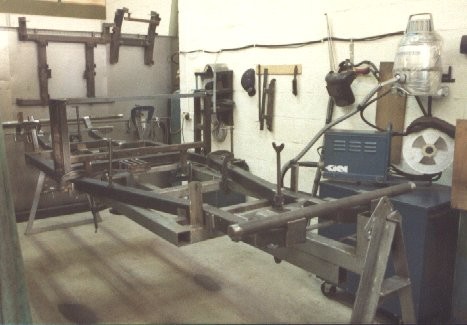
Early cars had the windscreen side pieces open, later ones were filled in.

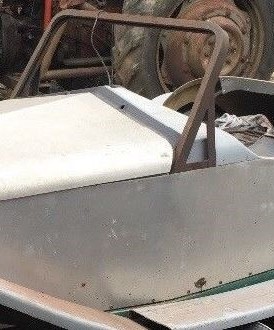
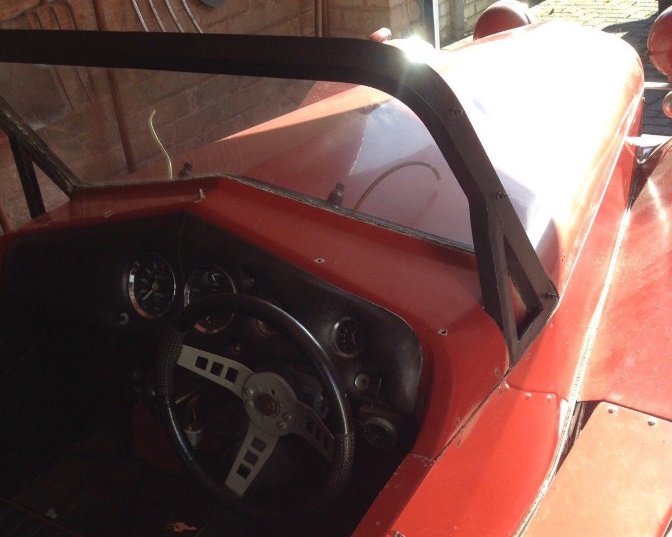
The open frame was with cars that originally had no doors, however some builders designed and installed their own doors.
Doors were an early option when a kit was ordered, and all kits built with the doors option at the factory had closed solid windscreen sides

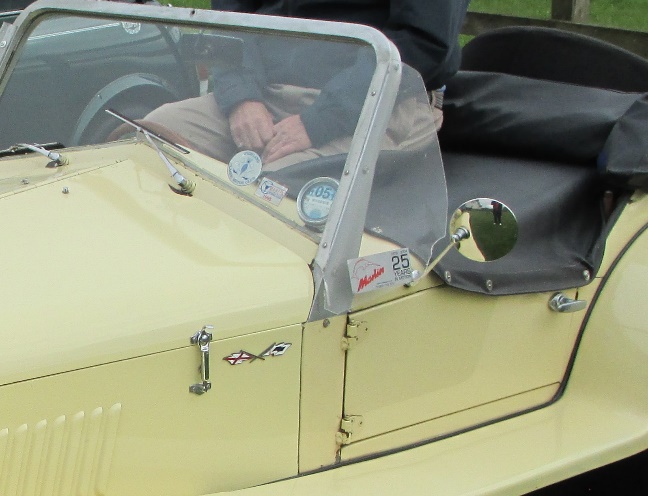
A: One piece GRP front wing and long running board GRP rear wing
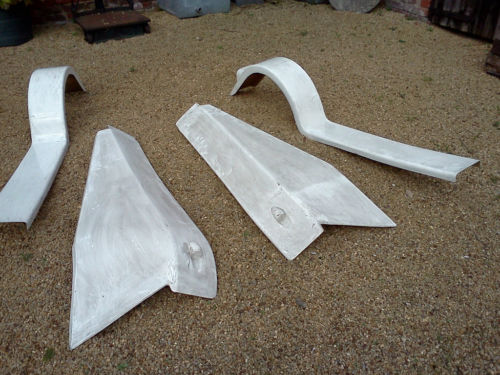
B: Chassis rear bumper irons open construction
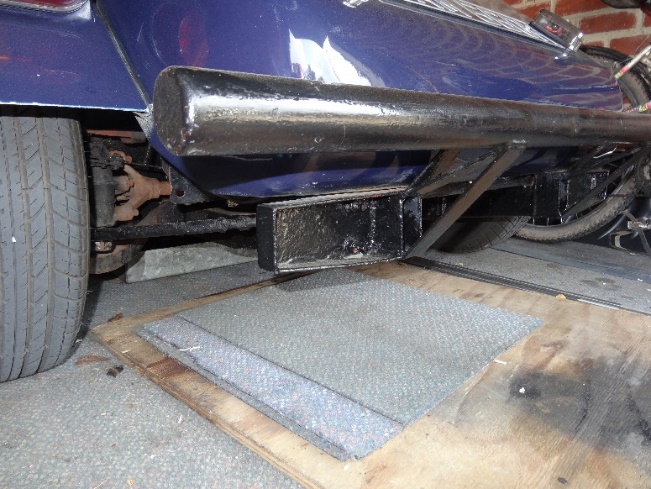
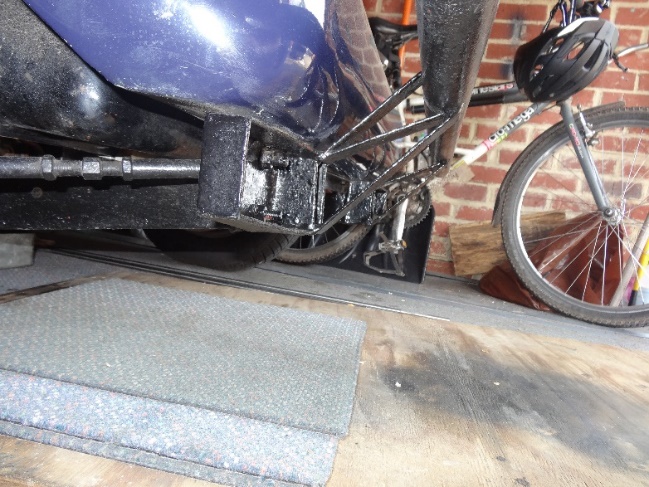
C: Screen clamp has sectioned bonnet support

D: Front nose has no return behind number plate and 3 screw fixing from top.
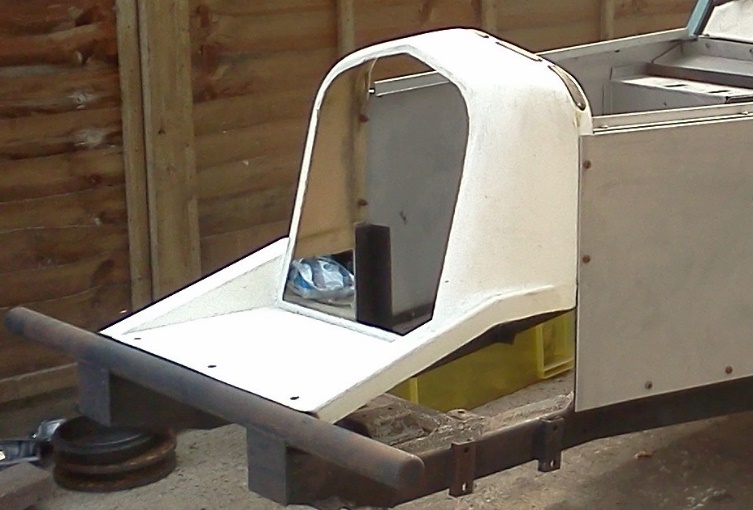
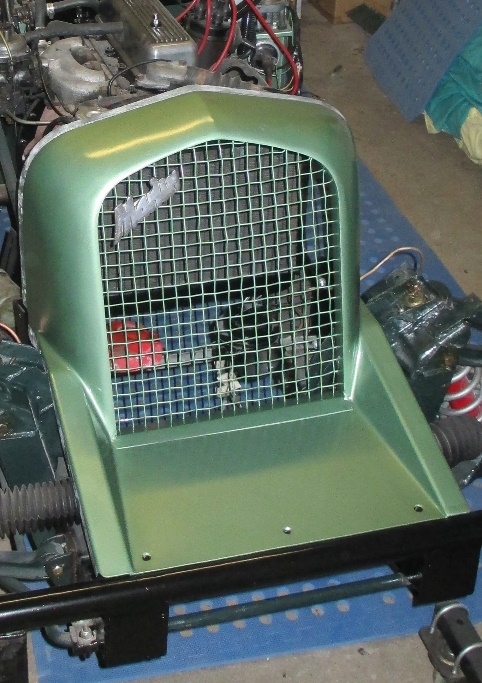
E: Raised rear deck 4” with a return behind seats.
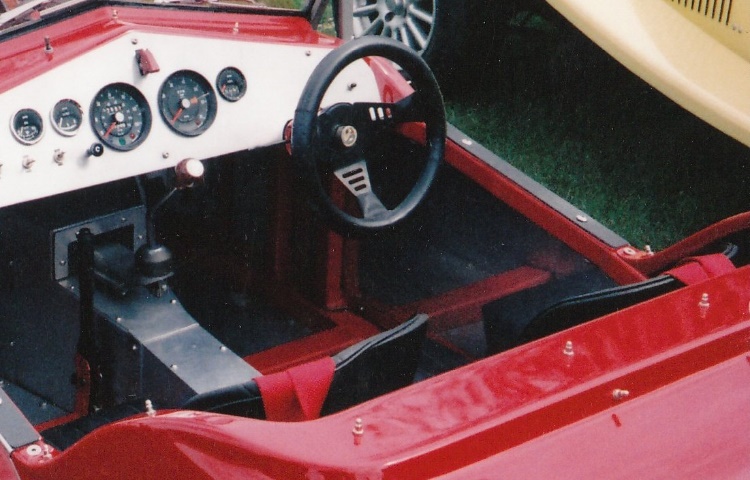
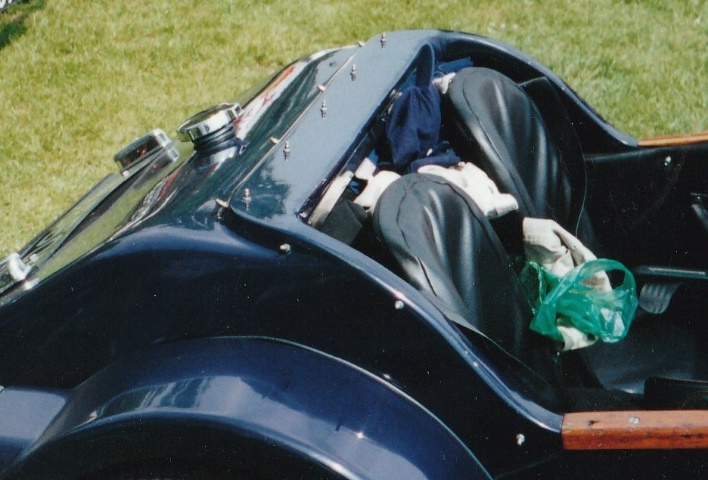
F: Chassis bumper irons became a solid part of the chassis.
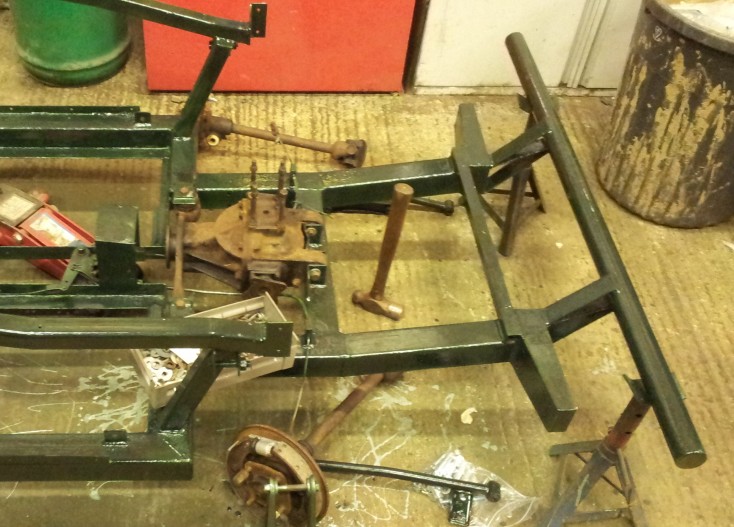
G: Screen clamp has full width bonnet support.
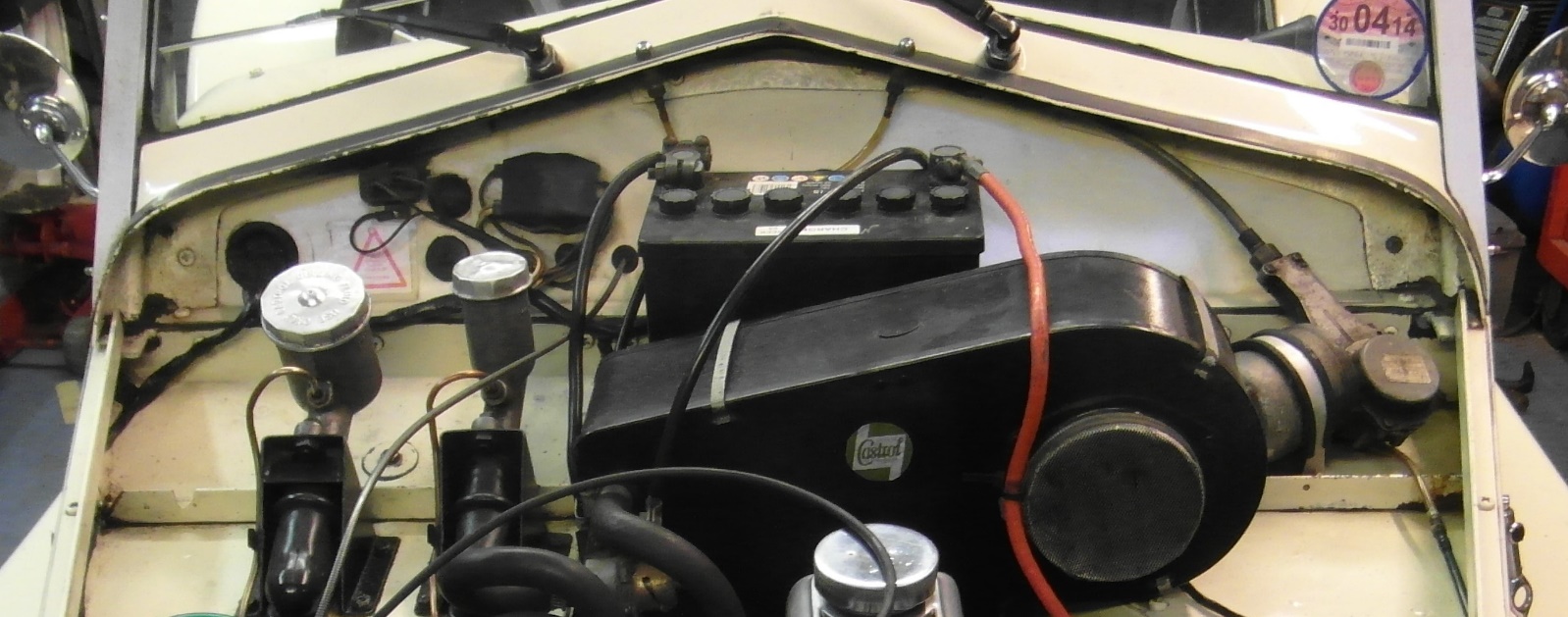
H: Rear body tub has a raw edge behind seats.
Note that there is a metal support piece welded (rivetted?) to the chassis cross rail
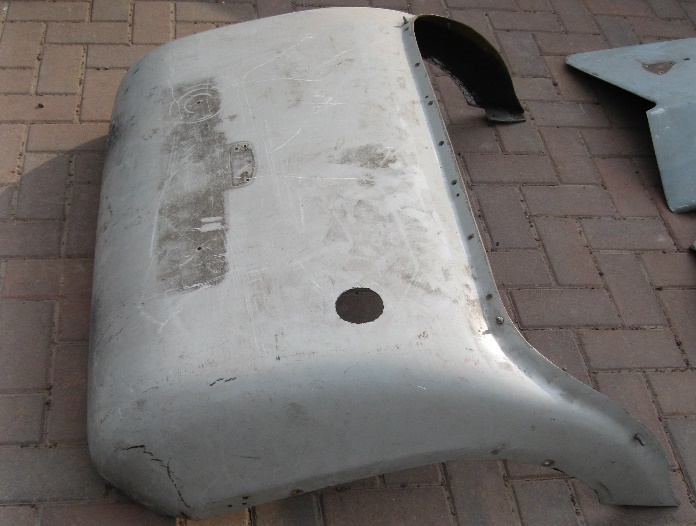

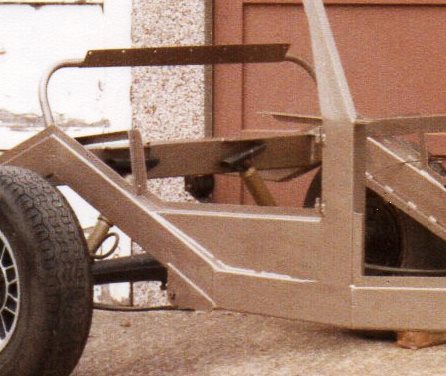
I: Flat lamp bar with GRP mounts.
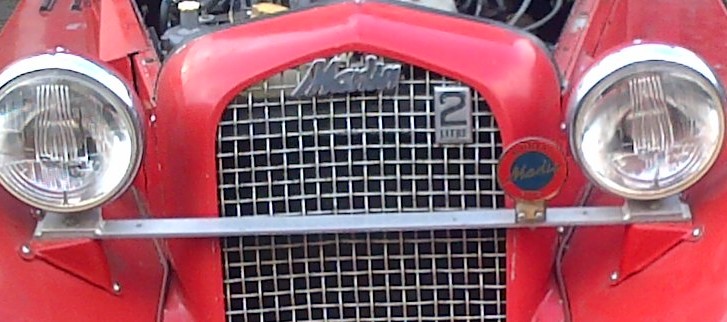
Other Options that became available:-
Spare wheel mounting on side. I don’t know for sure what it looked like, but here are a selection from both Triumph and Marina based cars, and some must be ones that builders “did themselves”
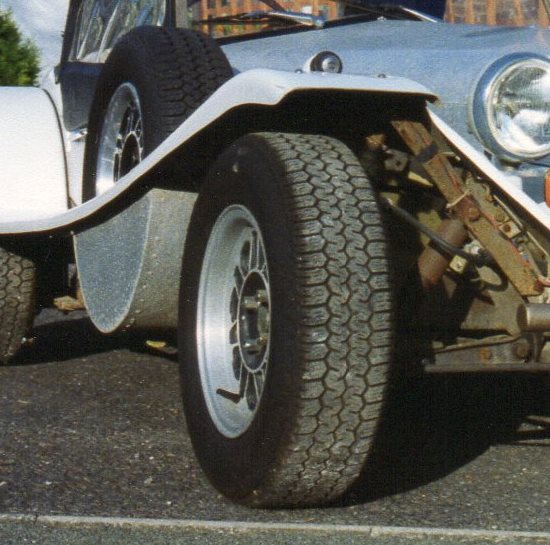
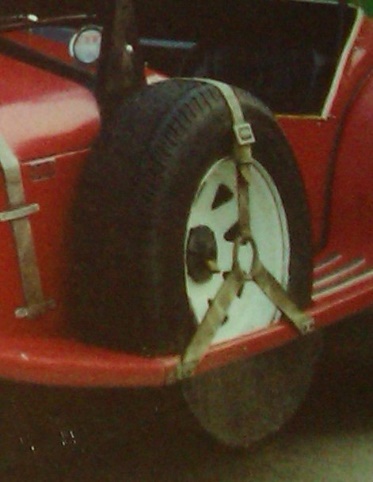
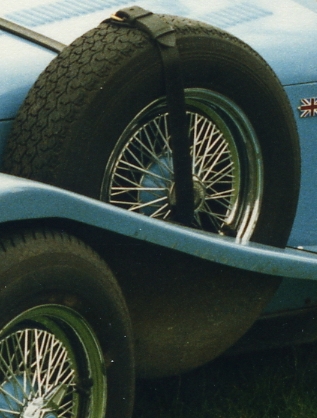
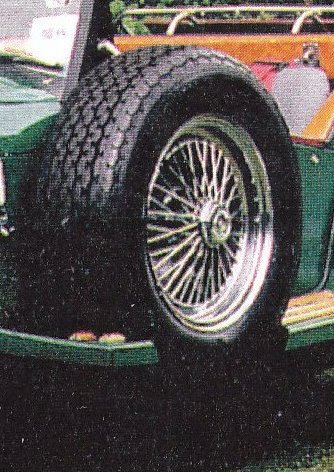

The welded tow ball was an option from early on – it was noted as £10 extra in August 1979
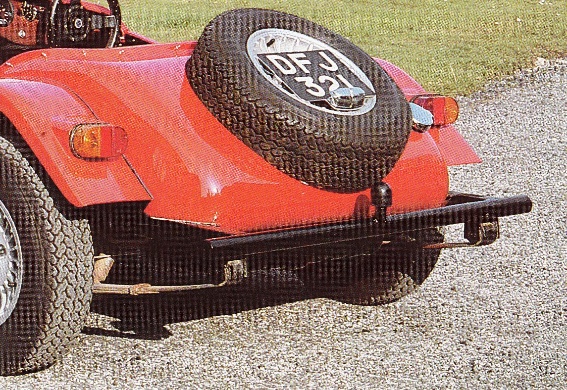
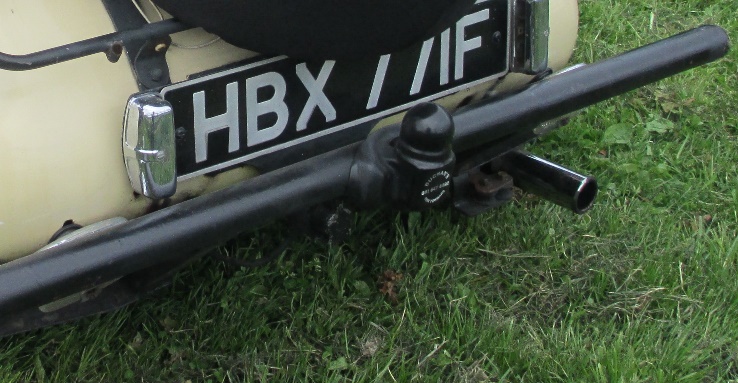
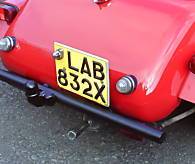
Spare wheel well in rear tub (these are Marina based cars)
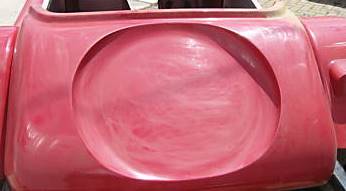
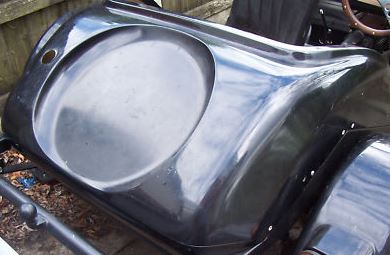
– again, there were home made options for rear spares on both Triumph and Marina based cars :
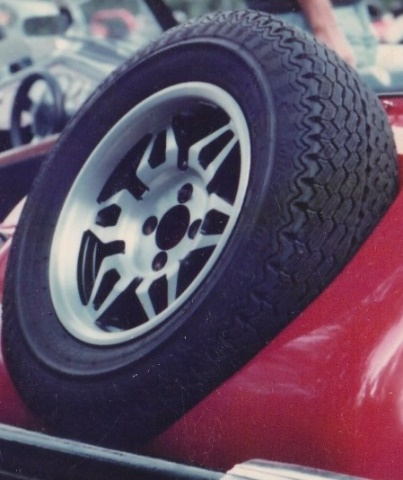
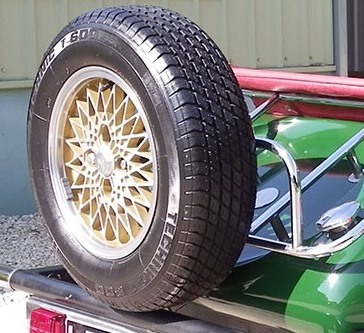
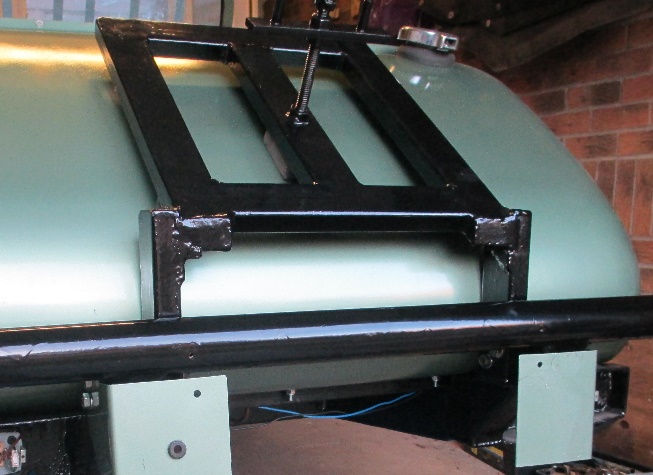
Louvres in cars with doors, (which had a separate engine panel). This pic is for a Marina based car, showing also the later option to have a hinged two piece bonnet
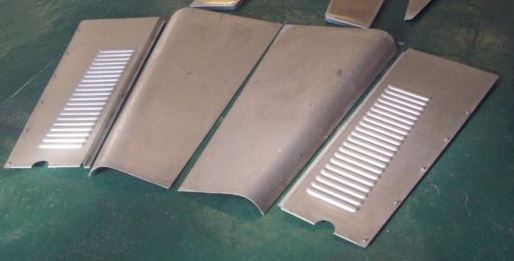
+++++++++++++++++++++++++++++++++++++++++++++++++++
Marina and Hybrid kits (Triumph front/Marina rear suspension.)
The later version of the Roadster (Chassis 2151 onwards) used the Morris Marina as the main donor vehicle, the majority being built from a single donor car using all Marina mechanicals. All cars had doors
Marlin also built “hybrid” kits using Triumph front suspension and Marina rear axle and suspension. The engine bulkheads on hybrids were manufactured to the purchasers choice of either Triumph or Marina engine/gearbox
These “hybrids” use the MK II prefix along with the Marina based kits, so it is not possible to pick them out from the records.
The top of the rear tub on early Marina kits still had a raw edge like most of the Triumph cars, and the tub didn’t have the spare wheel well as standard – though it was always available as an option.
Early doors were 18g aluminium shells with a plywood interior and flat topped, the builder having to make a hardwood top to match up to the scuttle moulding.
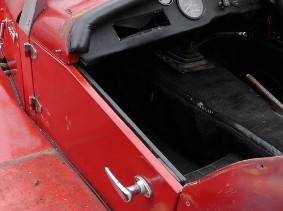
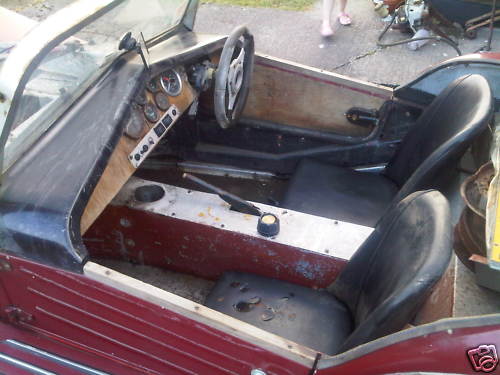
J 2 piece (and wider) GRP front wing with an ally inner wing (start date unknown).

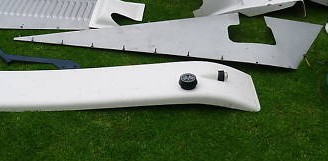
…………………..but some kits still have all GRP front and inner wings
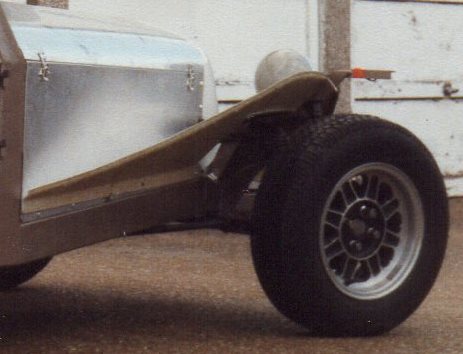
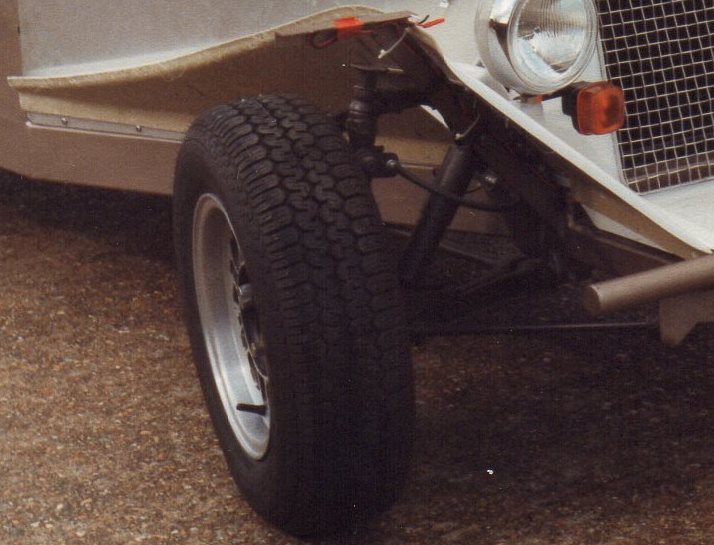
K Initially the LWB cars had 6” fibreglass extensions on the running boards – later cars had longer one piece mouldings, and the LWB doors are longer than SWB
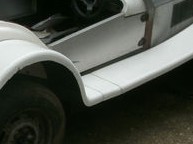
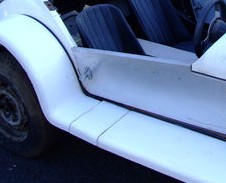
L Chrome or painted lamp bar (although some cars retro fit SS) screwed direct to the wings
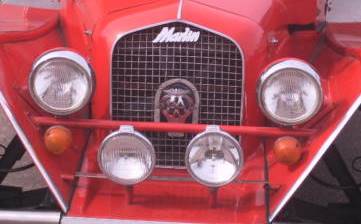
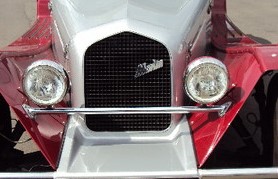

The nose cone remained as at “D” above, with no return behind number plate and 3 screw fixing from top.
Later Marina kits
M Front nose has return behind number plate 2 screw fixing from front.
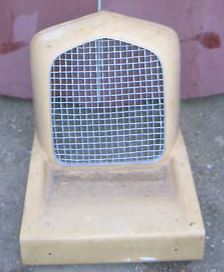
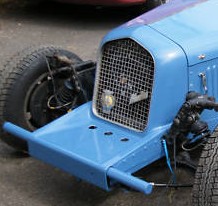
N Rear body tub has small roll return behind seats with spare wheel well.
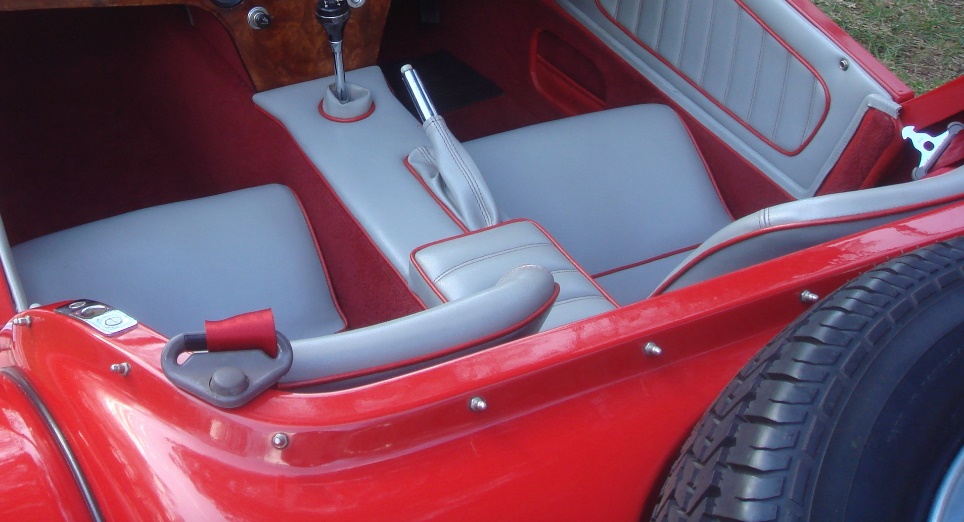
P LWB car has full extended front wing (no 6”spacer).
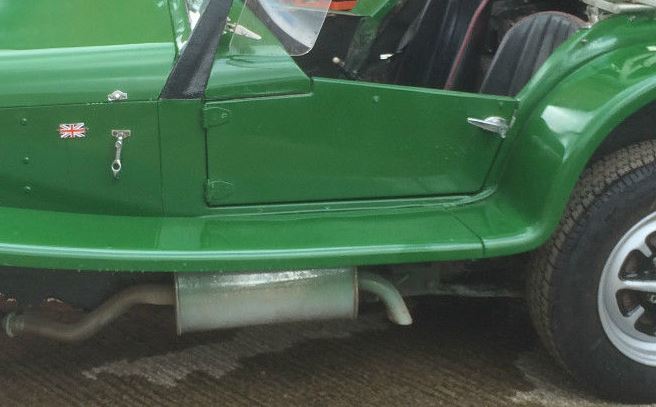
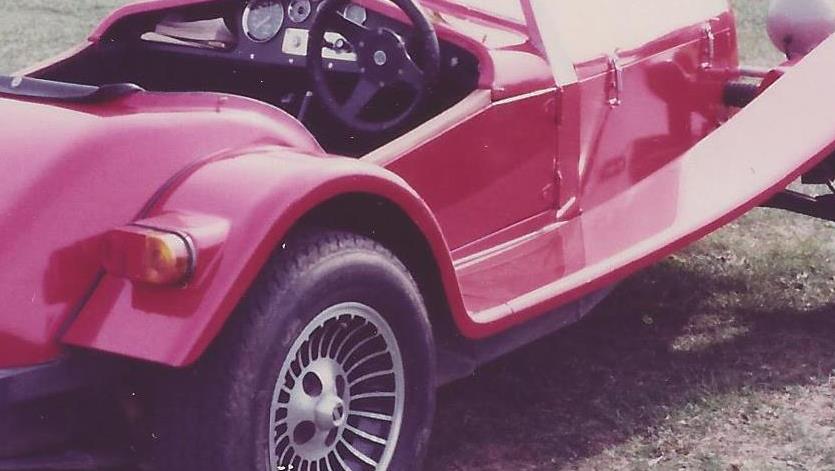
R Doors have stepped top to blend with the dash moulding.
……………………..see more pics at K above
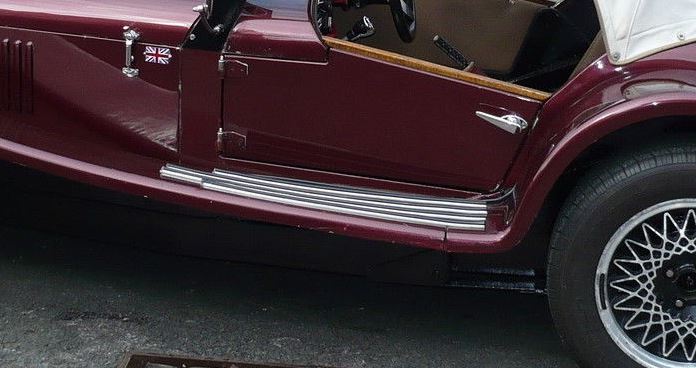

More options
Centrally hinged bonnet (see panel pictures in earlier text)
Panhard rod brackets to use Mk1 Fiesta rod….no pictures or details available
Marlin offered a “2+2” option, at this time I have not managed to identify a factory one but see below for some conversions
Other mods by owner/builders to both Triumph and Marina based cars
Rear hinged bonnet
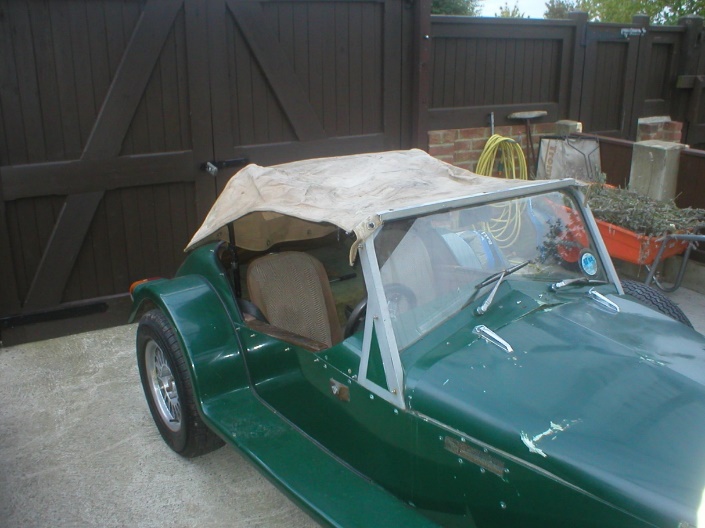
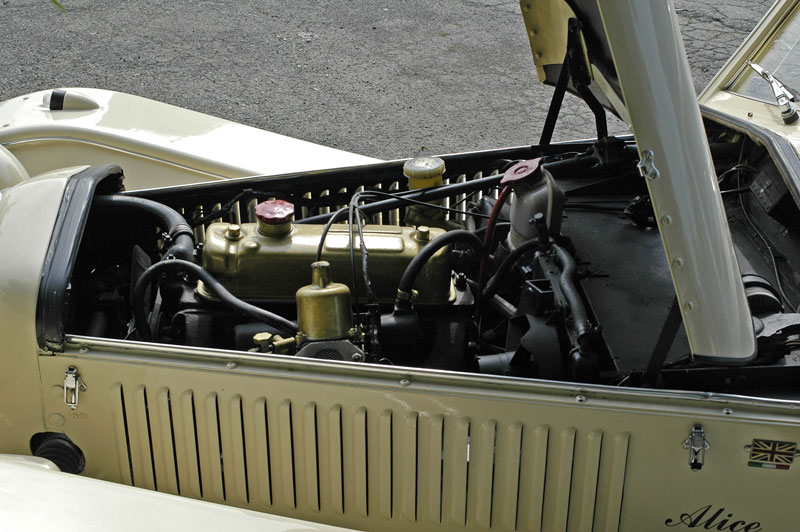
Side hinged bonnet

Some “2 + 2” conversions
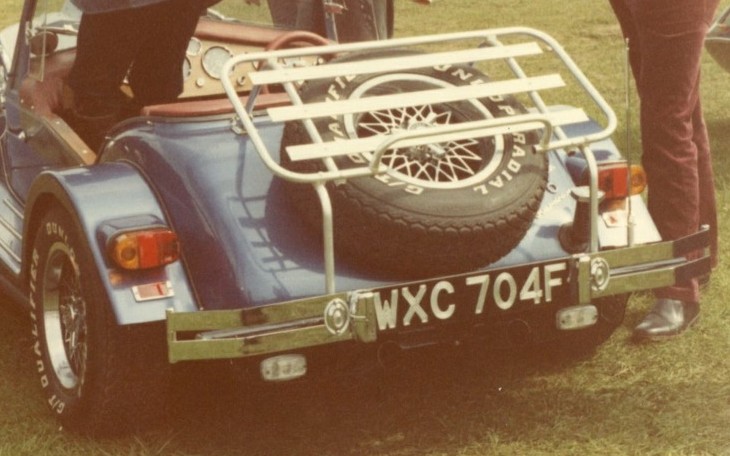
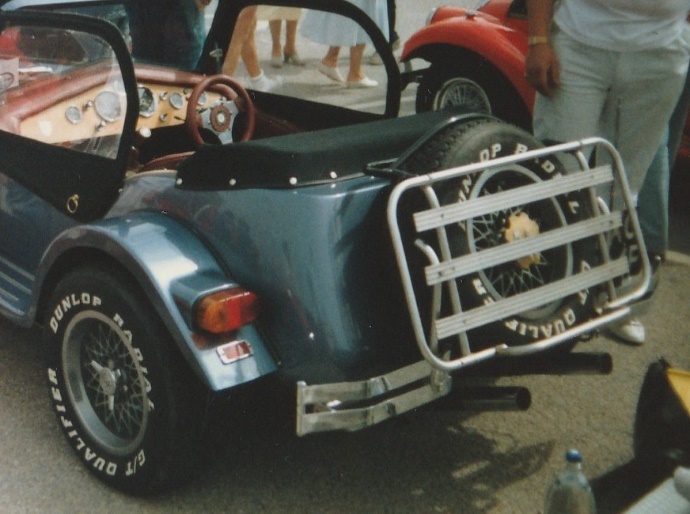
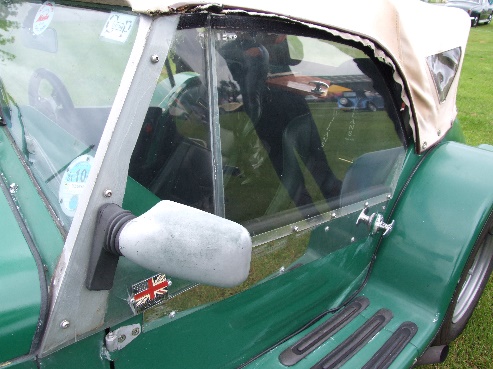
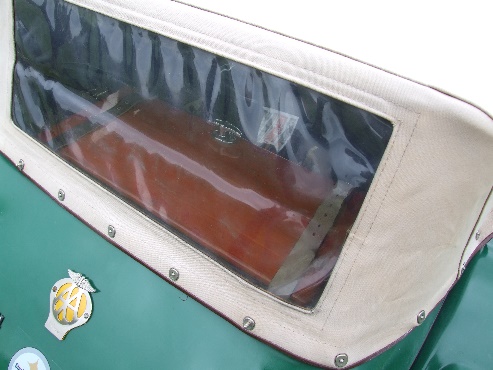
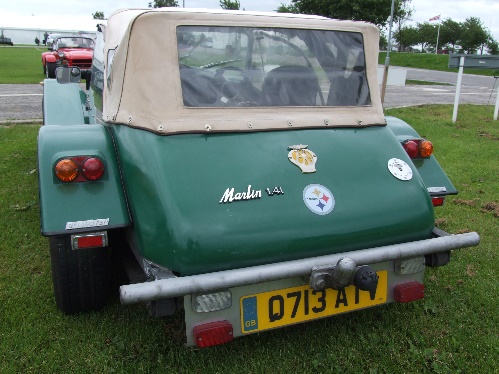
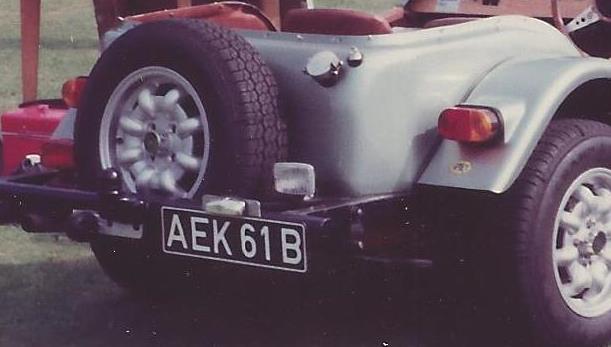
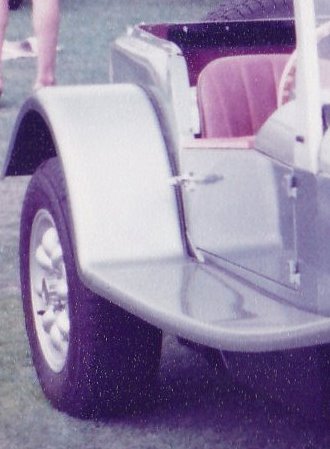
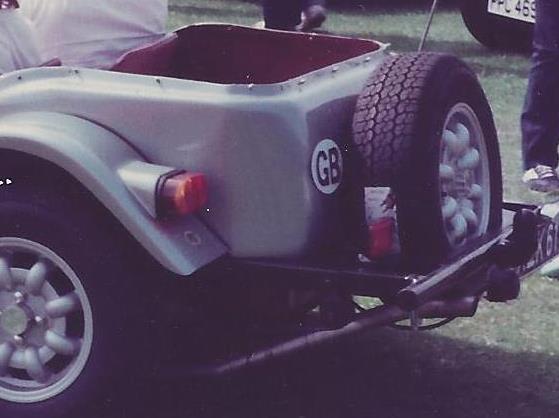
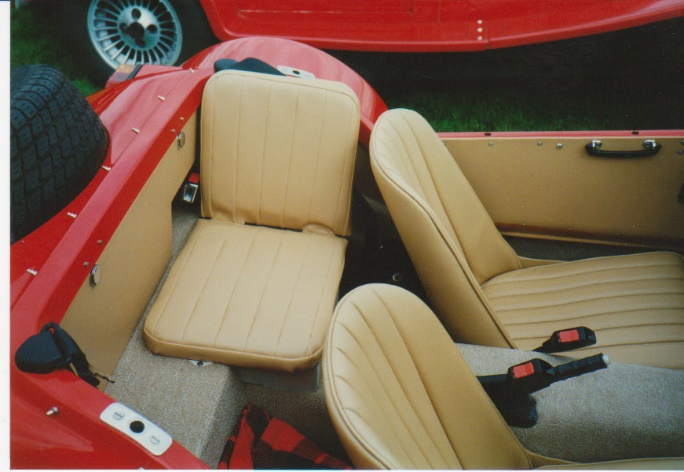
Rounded Wing Tips – so far I can only find pics of the front ones !
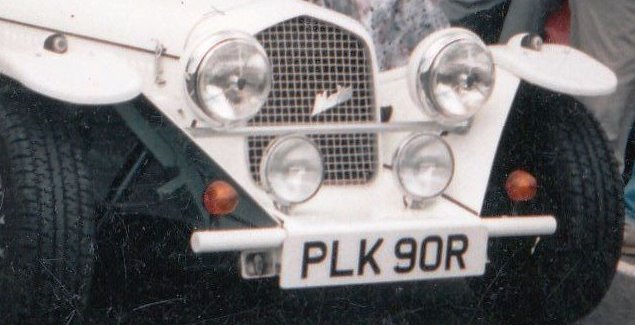
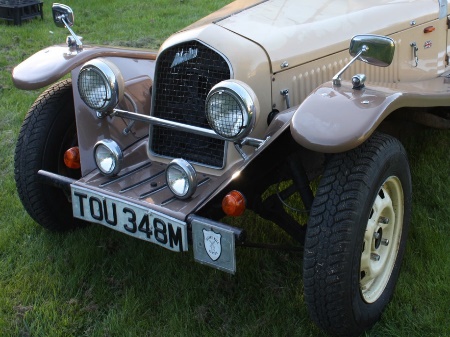
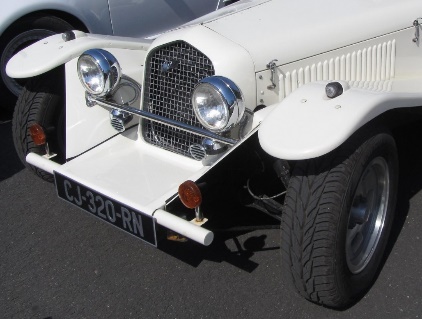
Hard top – over time many ideas have been tried, in fact many years ago two members were planning to produce some in f/glass. A few SWB were made, but I don’t think they ever made any for LWB cars. The clipping is from an old Pitstop magazine.
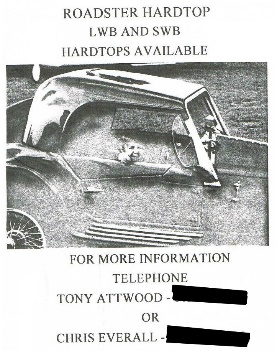
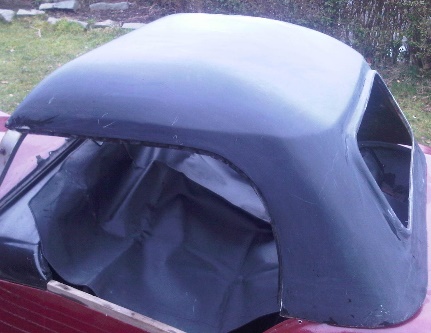
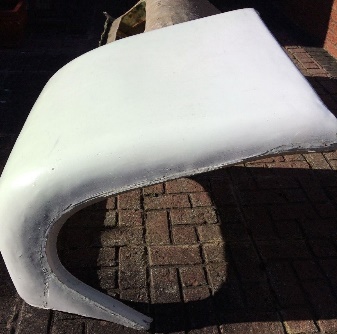
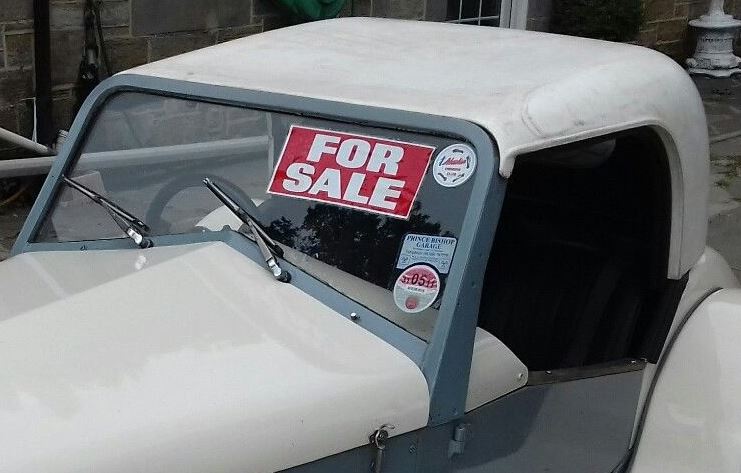
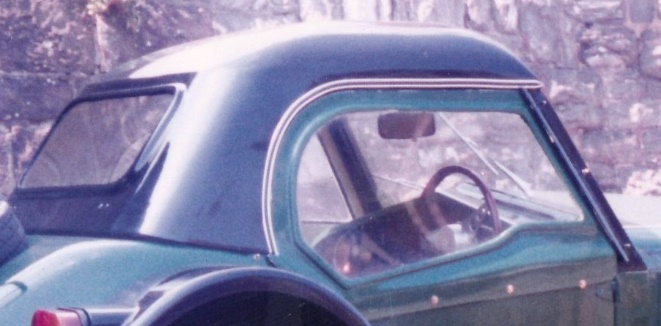
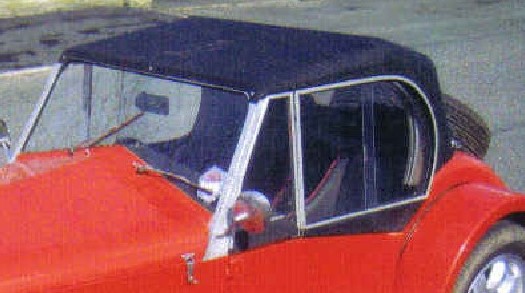
Side screens were available from the factory, but many members made their own, with varying degrees of success.
YKC Sidescreens
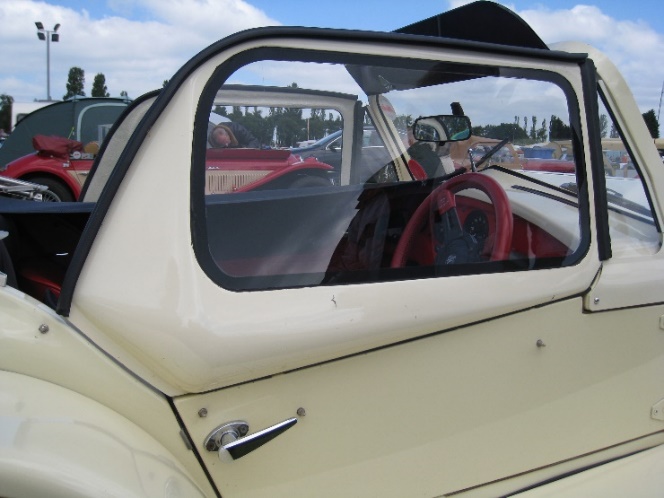
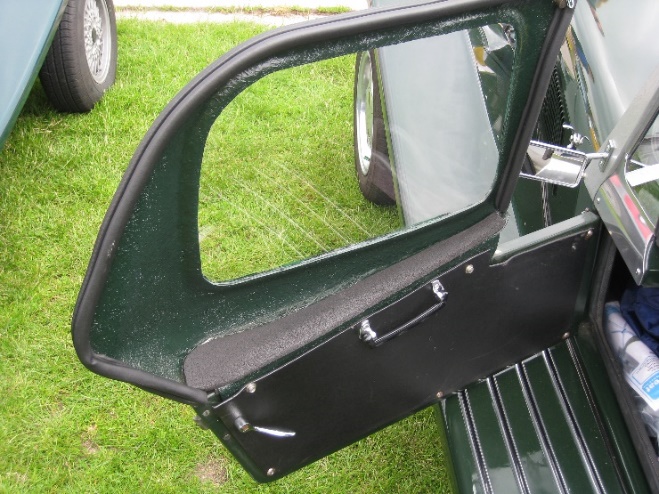
Marlin’s Roadster production continued through several factory moves until 1992, when the rights to the Roadster (and it’s 2+2 bigger sister the Berlinetta) were sold to Yorkshire Kit Cars (YKC).
YKC continued to produce and sell the Marina based cars whilst working on more modern variations and ideas – but that’s another story !
+ + +
Within the archive, there are copies of letters to customers, and some are worthy of repeat here, the date of the correspondence has the signatory’s initials following it
Letters and info from Marlin
22 May 81 (PM) The wheel arches are designed for a max wheel diameter of 24 inches, and at this date his Marina prototype is running well, has a Saab 96 fuel tank.
+ + +
23 Jul 82 (PM) Live axle version for Triumph based on the latest kit. Finished vehicle is 4 inches wider overall, with cockpit increased by 2 and half inches at the shoulder
+ + +
01 Oct 82 (PM) Currently two versions of a 2+2 under development :
First –stretched Marina version with wheel base of 97&3/4 inches instead of 92. This together with some small modifications to the rear body will give sufficient space for 2 small children (6 or 7 yrs old) or an extra 4 and half cubic feet of luggage space, making 8 cu ft in total. Available from Dec 82 onwards
Second- An all new, Cortina MkIII based car, with a 105 inch wheelbase, 5” wider interior for 2+2, hardtop, and production versions will be available from Apr 83 (BERLINETTA)
+ + +
14 Mar 83 (PM) MkII version is same length as MkI, but we can lengthen the chassis by 6 inches and have sold a few like this with a special tail moulding as 2+2 models. The MkII tail moulding does not lend itself to the 2+2 treatment, but the extra chassis length will be welcome for tall drivers.
+ + +
Apr 83 Info sheet
Due to our policy of continued development, we now have available a MK II kit. The main improvement has been a new tail moulding which has a full return on the cockpit edge and a spare wheel recess moulded in as standard. With the new tail are new welded aluminium doors and many detailed kit improvements and additions. It has also been possible to re-design the weather equipment, which now incorporates zip-in sidescreens, signalling flaps and welded seams.
The kit improvements and additions will incur no extra cost, and in fact, if you have already ordered a spare wheel recess, your invoice will be reduced by this amount. However, as there is now no option on spare wheel position, the running board recess will no longer be available.
The weather equipment will now retail at £116 instead of the previous £86. As this is rather a sharp increase, we will subsidize the cost for the time being and sell them for £100 including V.A.T.
As you will appreciate, those customers who have ordered a spare wheel recess and weather equipment, will receive an improved product at no extra cost.
Please contact us as soon as possible to confirm that this arrangement is agreeable.
In addition, we are now able to offer louvred engine compartment sides at a cost of £15 per car. Please let us know 21 days before collection/delivery if you wish us to incorporate this option.
N. B. Please contact us with regard to prices for double duck weather equipment.
+ + +
06 Jun 83 (RAC) The tail recess (for the spare) is for MkI kits. The MkII kit was introduced from chassis 2355
+ + +
03 Oct 84 (PM) Doors on LWB are 6 inches longer than SWB, and there is a useful space about 6-8 inches behind the seats
+ + +
24 Aug 89(DRT) Main easily noticeable difference of Mkl to Mkll Roadsters is on the top edge of the tail section around the cockpit – If the top edge has no return it is a MkI, the MkII edge folds back on itself. Other differences include :
If there is no spare wheel mounting recess the car is a MkI – note that some have been retro fitted
MkI doors are plywood clad in 18g ally MkII are all 12g ally
MkI kits were not made with bonnet side louvres – but some were retro fitted
+ + + +
